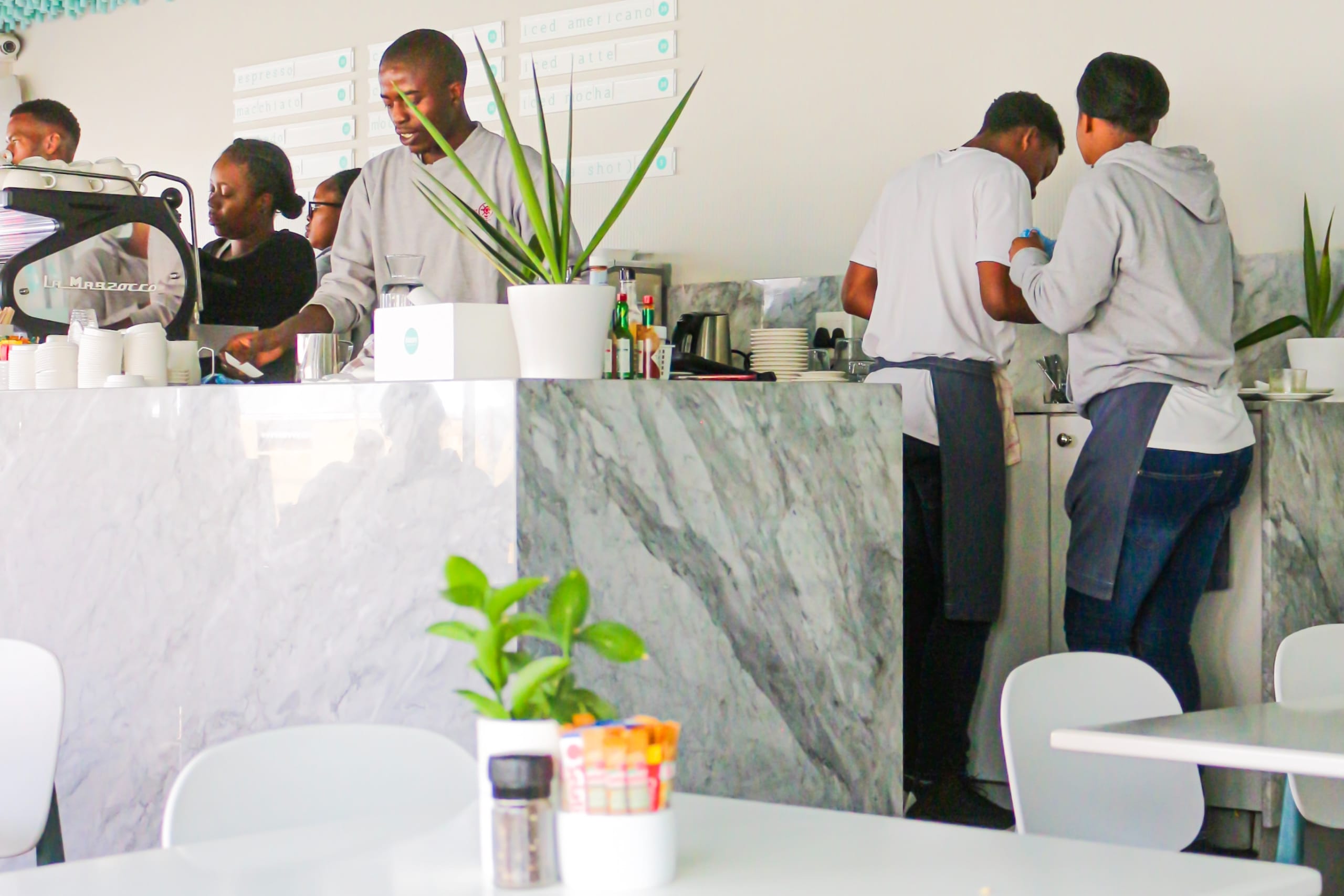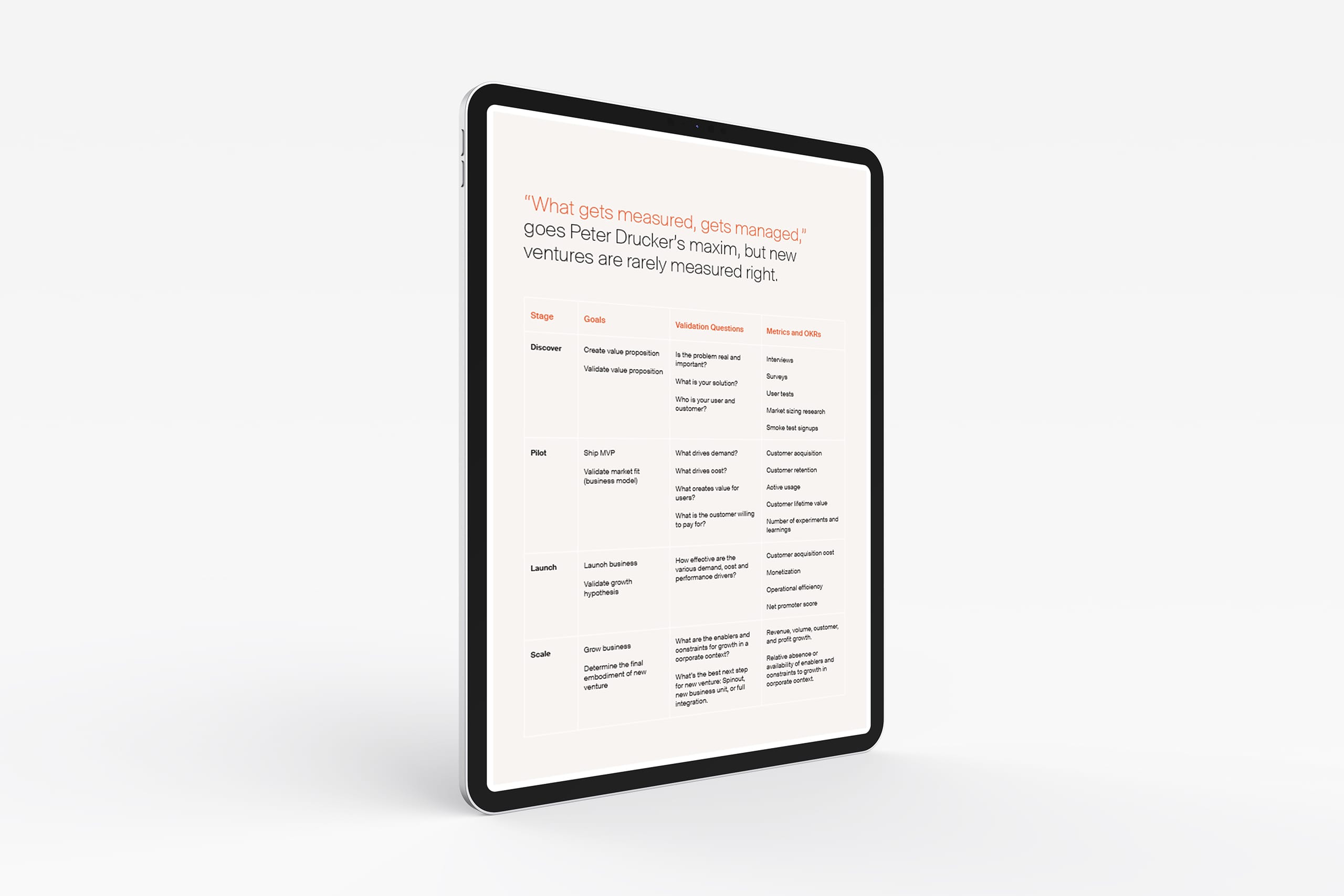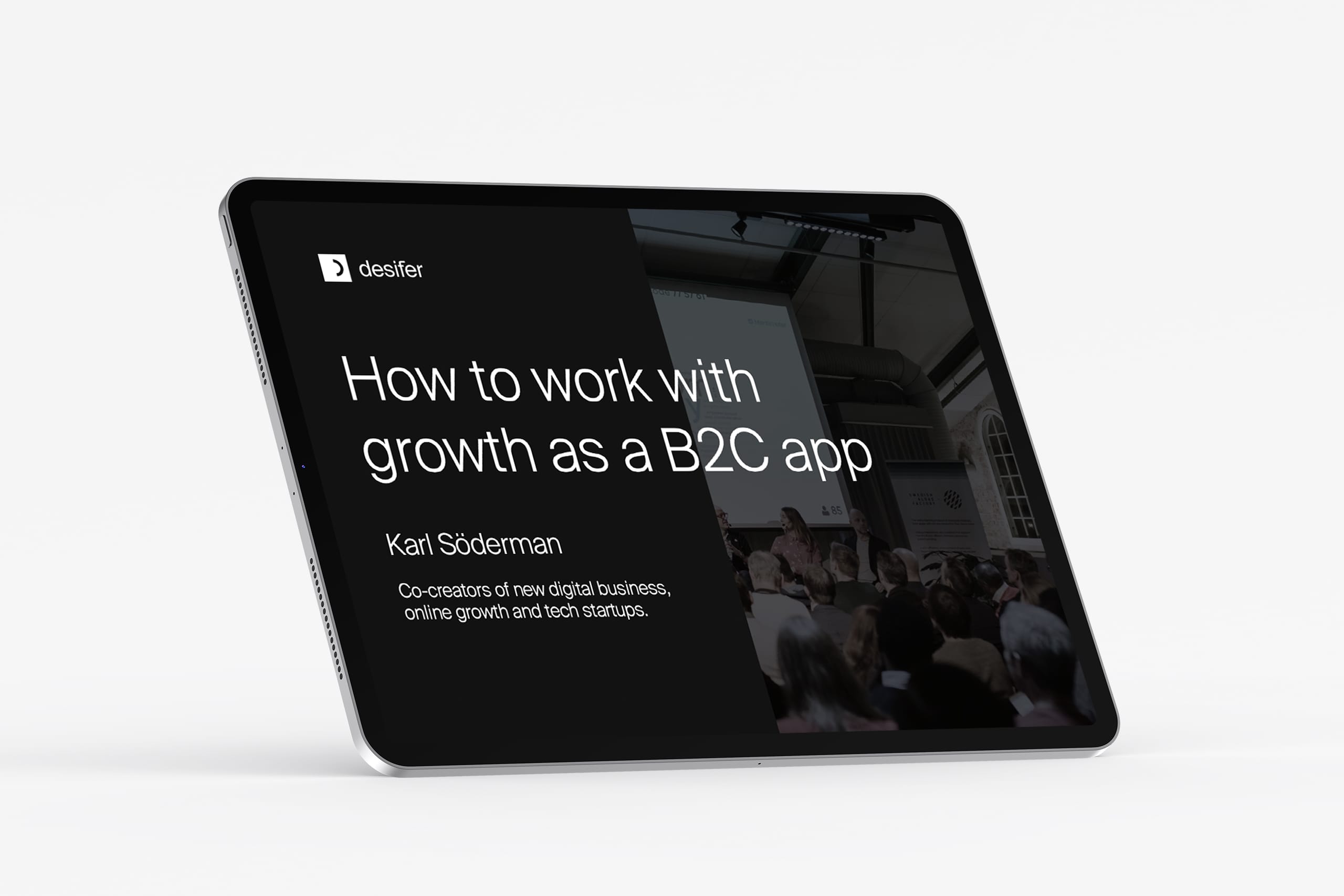Scale
Written by Karl Söderman
July 10, 2021
Factors for conversion rate optimization
Improving conversion on your website or app can be done in many different ways and with different intentions. In this article, we focus on what you can do to optimize the conversion in the step to a final decision and purchase . This is one of many areas which can be improved to increase your growth digitally, but of course, it depends on your offer and your target audience. Nevertheless, this can serve as a good checklist for things to try out.
Those working with CRO (Conversion Rate Optimization) often talk about the importance of iterative experimenting to see which changes that actually have an effect on the conversion rate.
Commonly used are A/B Tests or Split Tests (traffic split on two different sites) as this will show which site works best. Thereafter, changes can be made for all users before moving on to the next experiment.
However, many companies might have too little traffic to work with A/B Tests efficiently as it can take a long time to reach statistical significance (when it is possible to say that the test is actually mirroring the reality).
Even if it is not possible to work with A/B Tests “by-the-book”, it is still possible to work with conversion rate optimization by implementing factors that usually increase conversion.
There is a lot of literature within psychology about how people think and behave, and quite a lot of tests and studies have been made which show what can increase conversion rates
Baymard collected statistics on shopping cart abandonment rates and got an average of 69.23%, so there is evidently a lot to be done. Here are the most common reasons for customers not completing their purchases:

The LIFT Model
There are several things that can be done to improve conversion rates. A good starting point is to put yourself into your customers’ shoes and evaluate landing pages from the perspective of the page visitor. This can be done by using the “LIFT Model” (Landing Page Influence Function for Tests™), a conversion optimization framework showing Six Conversion Factors, developed by WiderFunnel.

Six factors – Value Proposition, Relevance, Clarity, Distraction, Urgency and Anxiety.
The LIFT Model is divided into Value Proposition, Relevance, Clarity, Distraction, Urgency and Anxiety. Value Proposition is the most important of the six conversion factors as it provides the potential for an improved conversion rate.
Three of the factors can be called drivers for conversion. These are Relevance, Clarity and Urgency. The value proposition and context on your landing page must be relevant to what the visitors are looking for, otherwise visitors will be disoriented and leave the page. The landing page must also clearly articulate the value proposition and call-to-action. Both design and content needs to be analyzed in order to create good flow and minimize comprehension time.
Urgency has two components, Internal and External. Internal Urgency (how the visitor feels upon arrival) is generally pre-existing while External Urgency can be influenced by what the marketer introduces to the visitor (e.g. the tone of the presentation, offers and deadlines)
Two of the factors are so called conversion inhibitors. these are Anxiety and Distraction. Anxiety is a function of the Credibility you have built with the visitor and the trust you are asking them to have. Think about potential misgivings the visitor could have about undertaking the conversion action. In order to minimize Distraction, look out for items on the page that could divert the visitor away from the goal. Try to minimize unnecessary product options, links and information that distracts the visitor because the more visual inputs and action options there are, the less likely the visitor is to make a conversion decision.
Practical ways to improve conversion rates
In addition to using the LIFT Model to better adapt landing pages to customers’ needs, there are many practical things that can be done to increase growth. Below, I have listed a number of ways for how two different types of businesses can improve their conversion rates: E-commerce and SaaS (Software as a Service). Following, is a list of tools (and links) which can be helpful, as well as a list of KPIs which can be useful to measure success.
Just remember that these should be seen as inspiration to experiments for your business rather than that it will work in any context and for any business 😉
20 ways to increase conversion at the point of purchase for E-Commerce
The relevance of the following will of course depend on your product
- Offer something very easy and cheap to buy initially (so called Tripwire). The psychological reason behind is that it is easier to get the visitors to make a small step. Once they have done so, it is easier to get them to take a bigger step.
- Offer “get your money back” guarantee
- Make it easy to return products. Preferably also for free
- Make sure it is easy to recreate and auto-fill information on a site in case it crashes or is closed down by mistake.
- Minimize the number of choices (too many choices will paralyze the visitor which minimizes the chances of conversion)
- Offer several payment options (some customers might be against using credit cards online, but are ok with paying with Klarna or Paypal)
- Offer different delivery options (pick up in store, mail order, delivery to door, different times etc.)
- Delivery for very little or for free (the most common reason people abandon their purchase is an unexpected fee)
- Have short delivery times
- Show that there are few items left (or in combination with how many that are currently looking at the same item)
- Create limited offers
- Create limited offers with countdowns
- Offer live chat
- Adapt UX based on the customer
- Show testimonials and ratings
- Make sure your checkout page is CRO optimized (e.g by removing any unnecessary distraction)
- Ensure correct price levels
- Develop a good zoom function and/or video
- Add a purchasing button in a contrasting color which follows through the purchasing journey
- Offer clear product information which answers the customers’ most important questions
Did you find this interesting and want to know more? Then I can recommend the following checklist for E-Commerce. Also this long list with psychology tricks to boost purchases can be interesting to have a look at. Or this list of best practises from Nick Kolenda.
17 ways to increase conversion at the point of purchase for SaaS:
- Make an explainer video
- List all benefits
- Show USPs compared to competitors
- Offer something very easy and cheap to buy initially (so called Tripwire)
- Offer a freemium or free-trial period
- Offer “get your money back” guarantee
- Ensure correct price levels
- Make sure your checkout page is CRO optimized (e.g by removing any unnecessary distraction)
- Make sure it is easy to recreate and auto-fill information on a site in case it crashes or is closed down by mistake.
- Minimize the number of choices (too many choices will paralyze the visitor which minimizes the chances of conversion)
- Offer several payment options
- Offer different delivery options
- Create limited offers
- Create limited offers with countdowns
- Offer live chat
- Adapt UX based on the customer
- Show testimonials and ratings
Did you find this interesting and want to learn more? Then I can recommend the following checklist for SaaS. Also this long list with psychology tricks to boost purchases can be interesting to have a look at. Or this list of best practises from Nick Kolenda.
Tools which help increase conversion
- Analytics and metrics:
- GA, Google Tag Manager, Hotjar, Fullstory, ContentSquare & Clicktale, Mixpanel, Kissmetrics, Crazyegg, LuckyOrange (also polls, A/B tests, etc.)
- Polls and similar to understand why customers don’t make purchases
- Hotjar polls, WebEngage, Qualaroo
- Email which can be sent based on triggers (e.g. abandoned shopping cart)
- Mailchimp, ConvertKit etc.
- List with several email tools specifically for Ecommerce
- Another long list with email tools, which can be easier compared
- A good guide: The anatomy of a perfect abandoned cart email
- A/B Tests
- Winback offers (abandoned shopping cart, countdown offer, coupons, etc.)
- Conversions on demand, Deadline funnel, Checkout Boost (if you have Shopify)
- Read more here: Cart recovery guide
- Live chat
- tawk.to, LiveChat, Olark, freshchat, Drift, Facebook messenger (perhaps in combination with ManyChat or Chatfuel)
- Retargeting
- Sitespeed
- Tools for increased social proof
- Prove source, Social proof (Shopify)
Metrics and KPIs which can be relevant in the conversion step
What KPIs that are relevant for you depends on what you sell and how you sell, but hopefully, this can give some inspiration:
- Conversion rate (Lead to sale or visitors on your sales page/product page which leads to sales)
- Guide for how to measure in Google analytics
- CAC = Customer Acquisition Cost
- or CPA = Cost per Acquisition
- RPV = Revenue per Visitor
- This metric can be adjusted for what is counted as revenue, and in which step visitors are measured (only visits on website, or visits on specific page closer to conversion?)
- Monthly number of sales
- Average order value
- Average conversion time (viral cycle time is one alternative)
- CTR = Click Through Rate
- More micro conversions such as adding a product to shopping cart or visiting the checkout page
- Shopping cart abandonment rate









































































